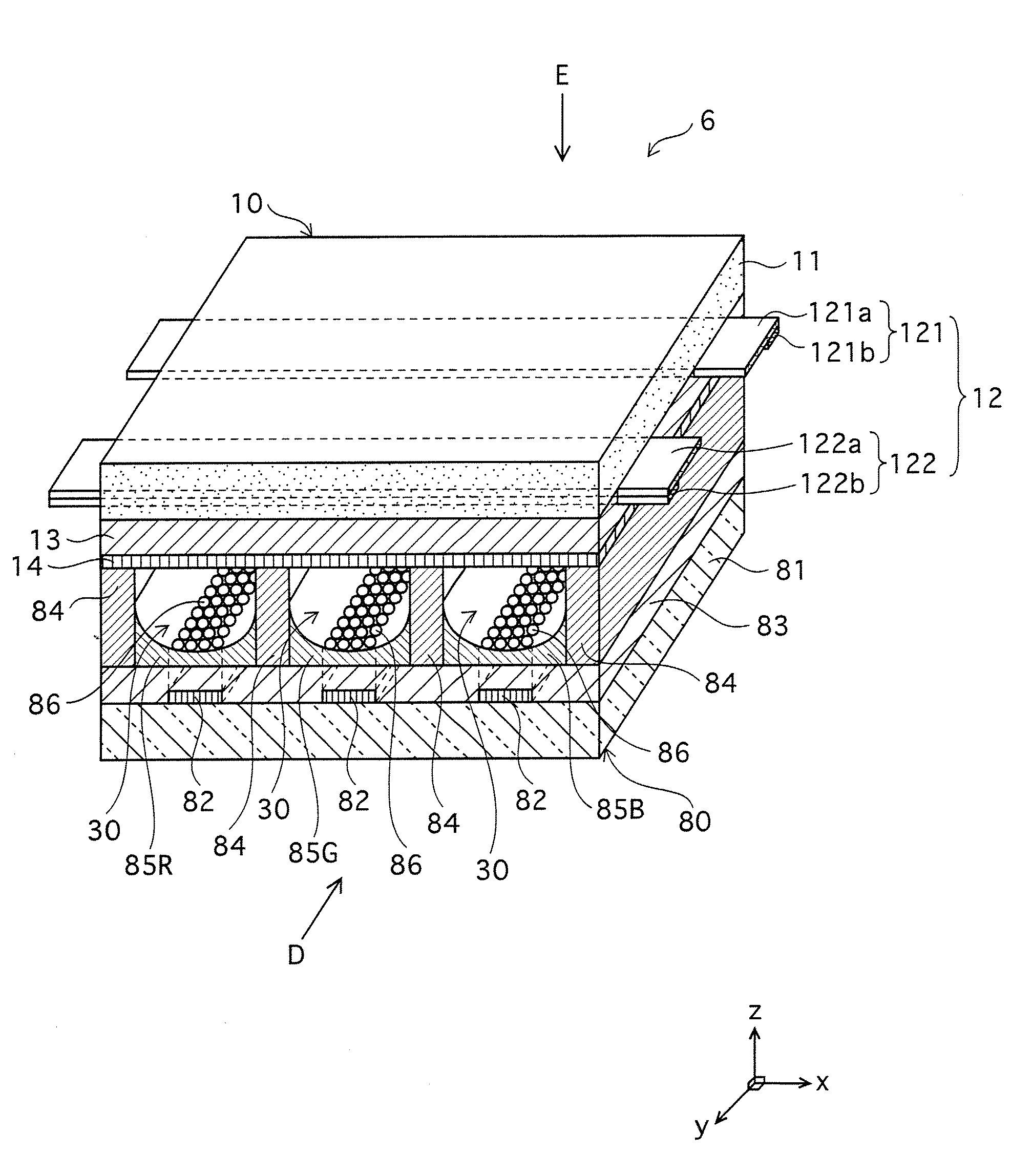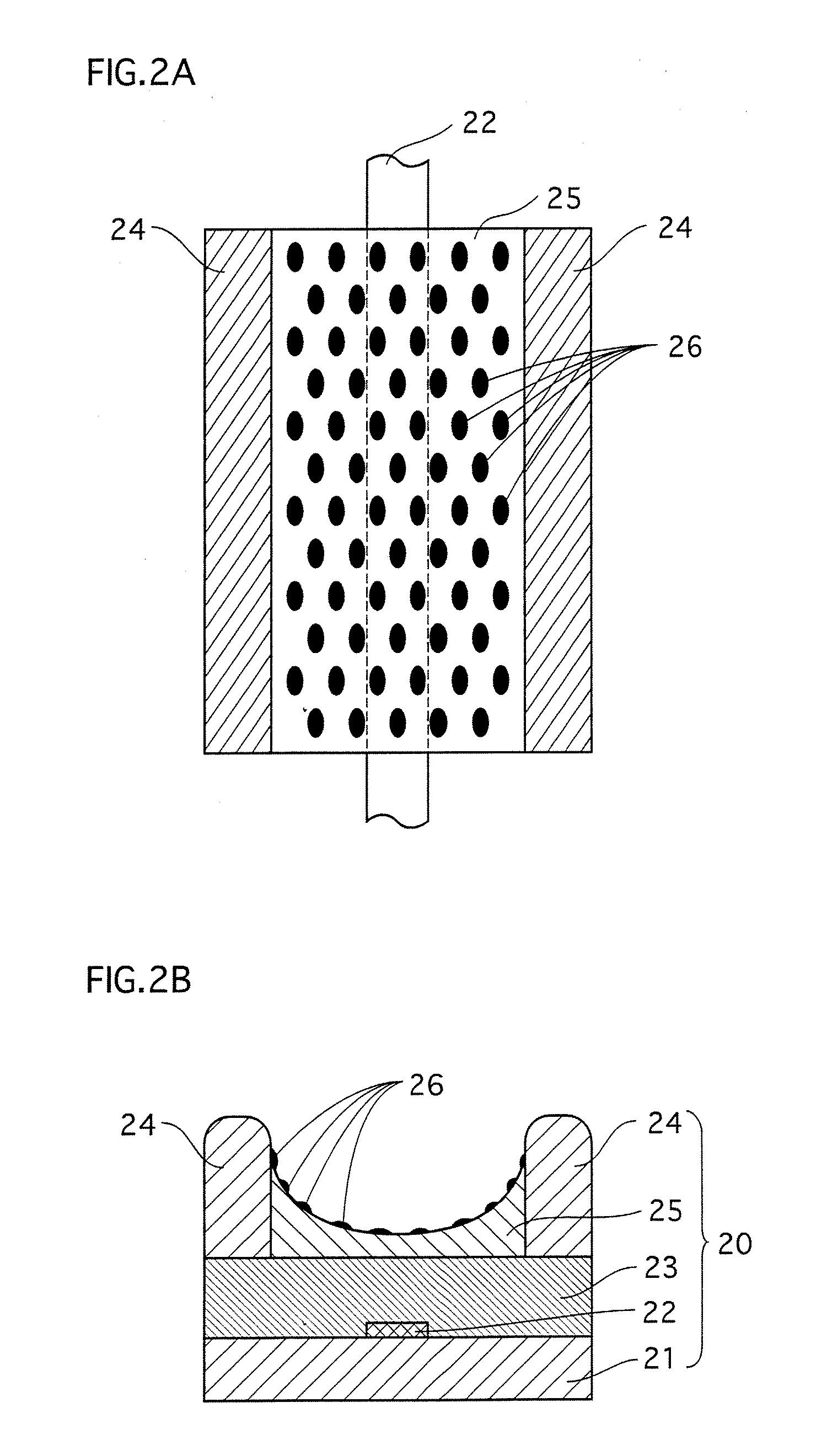Plasma Display Panel And Production Method Therefor
a technology of display panel and plasma, which is applied in the manufacture of electric discharge tube/lamp, discharge tube luminescnet screen, electrode system, etc., can solve the problems of high technical potential of surface discharge ac type pdp device, long life, weak discharge, etc., and achieve high luminous efficiency, high image quality, and reduce the effect of panel luminous efficiency
- Summary
- Abstract
- Description
- Claims
- Application Information
AI Technical Summary
Benefits of technology
Problems solved by technology
Method used
Image
Examples
embodiment 1
1. Entire Structure of PDP 1
[0149] The entire structure of a PDP 1 of the present invention will be described with reference to FIG. 1. FIG. 1 is a main part perspective view showing the main part of the PDP 1.
[0150] As shown in FIG. 1, the PDP 1 is composed of two major parts: a front panel 10 and a back panel 20. The front panel 10 is constructed such that a plurality of display electrode pairs 12 are disposed in parallel with each other on a main surface (in FIG. 1, the lower main surface facing downward in the Z axis direction) of a front substrate 11. And a dielectric layer 13 and a dielectric protective layer 14 are formed to cover the display electrode pairs 12, in the stated order. Each pair of the display electrode pairs 12 is made of a scan electrode (hereinafter referred to as Scn electrode) 121 and a sustain electrode (hereinafter referred to as Sus electrode) 122. The Scn electrode 121 is composed of a transparent electrode element 121a and a bus line 121b that are lam...
embodiment 2
[0185] The structure of a PDP 2 of Embodiment 2 will be described with reference to FIGS. 4A, 4B and 5. The front panel 10 and a back panel 40 excluding phosphor-coating films 46 are structured in the same manner as in Embodiment 1, and description thereof is omitted.
[0186] As shown in FIG. 4A, the phosphor-coating films 46 in the PDP 2 are formed on part of the surface of phosphor layers 45 as in Embodiment 1 in this sense, but are formed differently from the phosphor-coating films 26 in Embodiment 1 in that the phosphor-coating films 46 are formed in areas WDAT that are located directly above the Dat electrodes 42. Also, as shown in FIG. 4B that is a cross-sectional view taken along line A-A shown in FIG. 4A, the phosphor-coating films 46 are formed in areas WSCN that are located directly below the Scn electrodes 121 constituting the display electrode pairs 12 formed in the front panel 10.
[0187]FIG. 5 shows only the electrodes 121, 122, and 42, the barrier ribs 44, and the phosp...
embodiment 3
[0193] A PDP 3 of Embodiment 3 will be described with reference to FIG. 6. The front panel 10 and a back panel 50 excluding the high γ members are structured in the same manner as in Embodiments 1 and 2, and description thereof is omitted.
1. Structure of PDP 3
[0194] As shown in FIG. 6, in the PDP 3 of the present embodiment, particles 56 are attached to the surface of phosphor layers 55. The particles 56 are made of a material that has a higher value of the secondary electron emission coefficient γ than each phosphor material of the phosphor layers 55. For example, the particles 56 are made of the same material as the phosphor-coating films 26 disclosed in Embodiment 1. In the PDP 3 of the present embodiment, the portions where the particles 56 are formed on the surface of the phosphor layers 55 are the high γ members. As one example, the high γ members can be formed using a metal oxide such as MgO or SrO as the material. In this case, particles of the metal oxide that are in the ...
PUM
 Login to View More
Login to View More Abstract
Description
Claims
Application Information
 Login to View More
Login to View More - R&D
- Intellectual Property
- Life Sciences
- Materials
- Tech Scout
- Unparalleled Data Quality
- Higher Quality Content
- 60% Fewer Hallucinations
Browse by: Latest US Patents, China's latest patents, Technical Efficacy Thesaurus, Application Domain, Technology Topic, Popular Technical Reports.
© 2025 PatSnap. All rights reserved.Legal|Privacy policy|Modern Slavery Act Transparency Statement|Sitemap|About US| Contact US: help@patsnap.com



